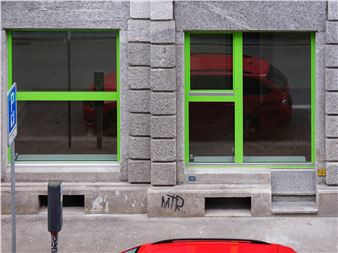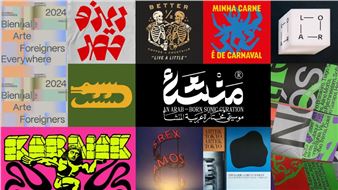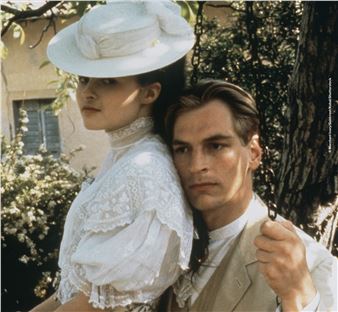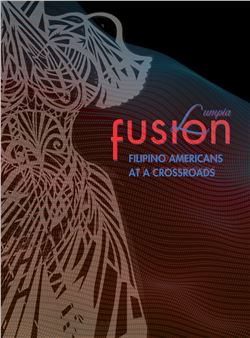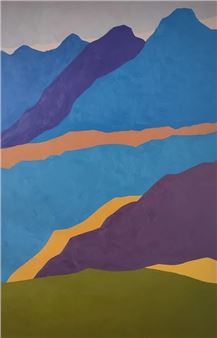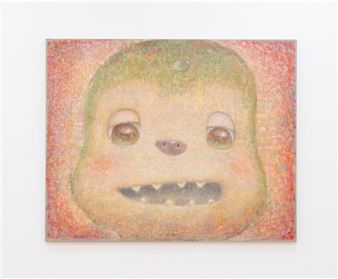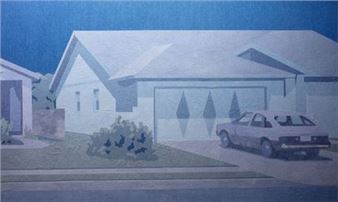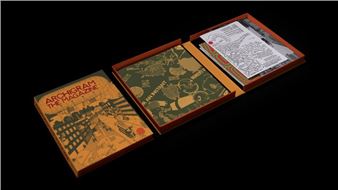Chang Yachin: Finding Ewha
Perrotin New York is pleased to present Finding Ewha by Chang Ya Chin, the artist's first solo exhibition with the gallery. Chang creates intimate, highly detailed oil paintings that combine the visual language of classical still life with a distinctly contemporary sensibility. Ripe pears, saltshakers, and other humble materials become portals into self- contained worlds where gravity and humor are given equal weight.
Born in Hong Kong, she studied classical painting at ateliers in Florence, Paris, and New York City. Combining technical precision with personal interests, Chang has developed a visual language that is inspired by a range of references-from 18th century French still life painter Jean Simeon Chardin to modern Swedish abstractionist Hilma af Klint, as well as the comic book style of Calvin and Hobbes. As a result, her works possess both a masterful attention to texture, form, light, and an undercurrent of humor and mischief.
Chang's process begins long before brush meets canvas. As a collector of objects-from online and antique markets, toy stores, or grocery stores-she is interested in the ability of objects to hold personal and societal meaning. Each object is kept on hand until it
reveals its purpose. In her studio, she stages scenes by carefully arranging lighting and miniature props, including swords or woven hats, which she paints from life. Once painted into existence, her figures slip beyond her grasp. Oftentimes, subjects appear at a crossroads or at a critical point in their journey-as in Ways / or Ways II,-taking on their own autonomous logic. In her paintings, looking becomes an act of excavation, where each brushstroke invites further questions.
In Finding Ewha, food becomes a recurring subject. Curry fish balls, fruit, and shrimp dumplings are rendered with exquisite care, evoking a feeling of nostalgia. The natural evolution and decay of these objects become a narrative device-marking the passage of time and imbuing Chang's paintings with a living presence. In Traditions: Feast, a banquet appears frozen in time: thin rolls of meat stacked into a neat pyramid, tofu sheets folded with the orderliness of pressed linen, a small hot pot with its burner, and a cluster of meatballs awaiting their turn in the broth. At either end of the table, two bright mandarin oranges punctuate the subdued palette, becoming active dinner guests. Lit from above in a chiaroscuro stillness, the scene has an almost devotional air, transforming a casual meal into a kind of ritual.
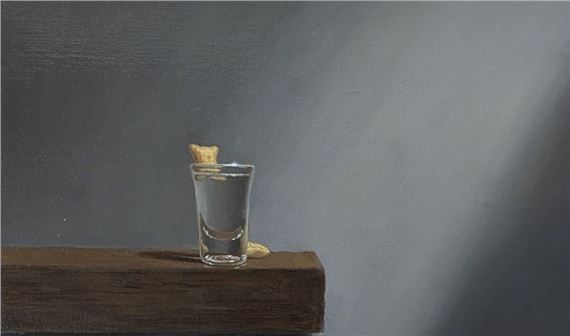
Recommended for you
Perrotin New York is pleased to present Finding Ewha by Chang Ya Chin, the artist's first solo exhibition with the gallery. Chang creates intimate, highly detailed oil paintings that combine the visual language of classical still life with a distinctly contemporary sensibility. Ripe pears, saltshakers, and other humble materials become portals into self- contained worlds where gravity and humor are given equal weight.
Born in Hong Kong, she studied classical painting at ateliers in Florence, Paris, and New York City. Combining technical precision with personal interests, Chang has developed a visual language that is inspired by a range of references-from 18th century French still life painter Jean Simeon Chardin to modern Swedish abstractionist Hilma af Klint, as well as the comic book style of Calvin and Hobbes. As a result, her works possess both a masterful attention to texture, form, light, and an undercurrent of humor and mischief.
Chang's process begins long before brush meets canvas. As a collector of objects-from online and antique markets, toy stores, or grocery stores-she is interested in the ability of objects to hold personal and societal meaning. Each object is kept on hand until it
reveals its purpose. In her studio, she stages scenes by carefully arranging lighting and miniature props, including swords or woven hats, which she paints from life. Once painted into existence, her figures slip beyond her grasp. Oftentimes, subjects appear at a crossroads or at a critical point in their journey-as in Ways / or Ways II,-taking on their own autonomous logic. In her paintings, looking becomes an act of excavation, where each brushstroke invites further questions.
In Finding Ewha, food becomes a recurring subject. Curry fish balls, fruit, and shrimp dumplings are rendered with exquisite care, evoking a feeling of nostalgia. The natural evolution and decay of these objects become a narrative device-marking the passage of time and imbuing Chang's paintings with a living presence. In Traditions: Feast, a banquet appears frozen in time: thin rolls of meat stacked into a neat pyramid, tofu sheets folded with the orderliness of pressed linen, a small hot pot with its burner, and a cluster of meatballs awaiting their turn in the broth. At either end of the table, two bright mandarin oranges punctuate the subdued palette, becoming active dinner guests. Lit from above in a chiaroscuro stillness, the scene has an almost devotional air, transforming a casual meal into a kind of ritual.
Artists on show
Contact details


 ARTISTS
ARTISTS







